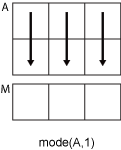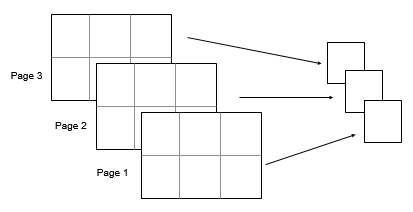mode
数组中出现次数最多的值
说明
M = mode(A)A 的样本众数,即 A 中出现次数最多的值。如果有多个值以相同的次数出现,mode 将返回其中最小的值。对复杂的输入,最小值是排序列表的第一个值。
如果
A为向量,则mode(A)返回A中出现次数最多的值。如果
A为非空矩阵,那么mode(A)将返回包含A每列众数的行向量。如果
A为 0×0 空矩阵,mode(A)返回NaN。如果
A为多维数组,则mode(A)将沿大小不等于1的第一个数组维度的值视为向量,并返回一个由出现次数最多的值组成的数组。此维度的大小将变为1,而所有其他维度的大小保持不变。如果
A是表或时间表,则mode(A)返回单行表,其中包含每个变量的模式。 (自 R2023a 起)
示例
输入参数
输出参量
提示
mode函数对于离散数据或粗略舍入数据非常有用。一个连续概率分布的众数被定义为其密度函数的峰值。将mode函数应用到不太可能产生良好峰值估计值的分布样本;这样能更好地计算出直方图或密度估计值并计算估计值的峰值。此外,mode函数也不适合查找具有多个众数的分布的峰值。
扩展功能
版本历史记录
在 R2006a 之前推出另请参阅
mean | median | histogram | histcounts | sort


